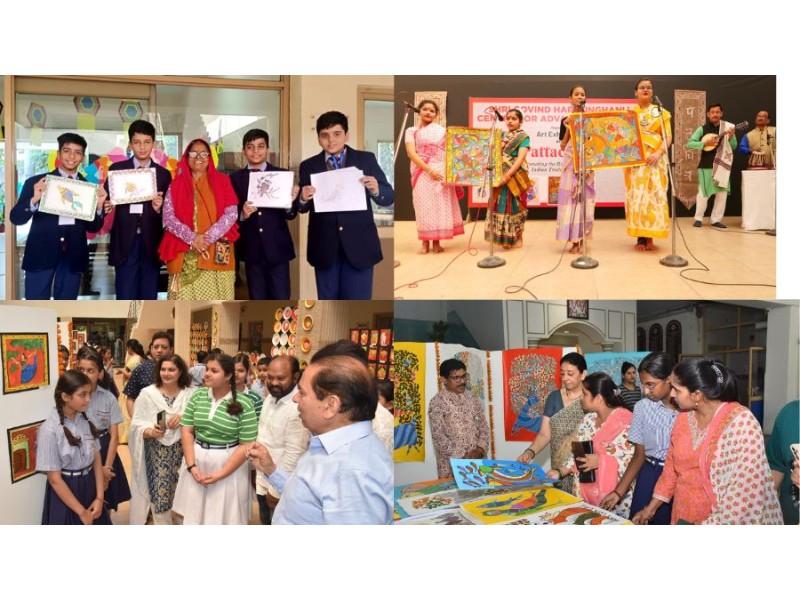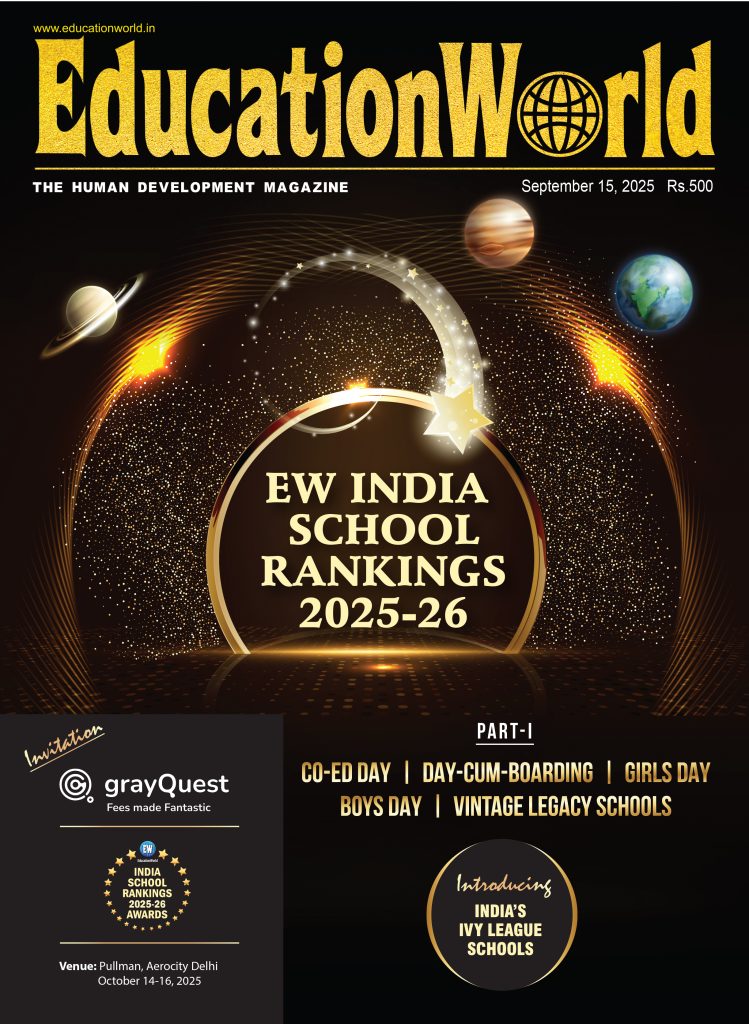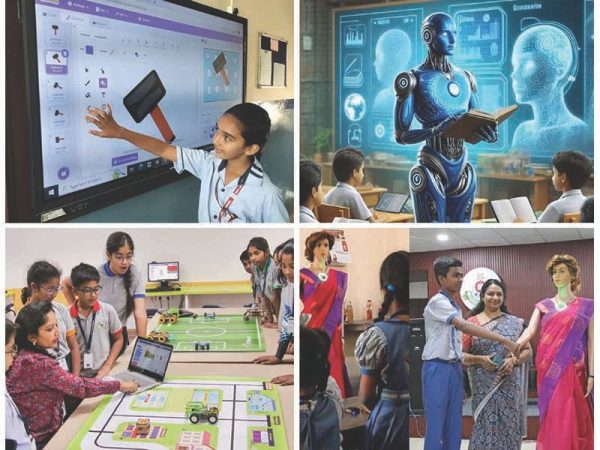SPSEC: Reviving heritage through arts
In an era where digital advancement often sidelines the traditional, Sir Padampat Singhania Education Centre (SPSEC), Kanpur has emerged as a custodian of India’s timeless heritage. Through the Shri Govind Hari Singhania Centre for Advanced Learning – The Skill School, SPSEC has reimagined education as a canvas of culture, creativity, and character.
By reviving some of India’s most celebrated heritage art forms—including Pattachitra (Odisha & Bengal), Cheriyal (Telangana), Gond (Madhya Pradesh), Warli (Maharashtra), Madhubani (Bihar), and Phad (Rajasthan)—the school has created a dynamic, immersive learning ecosystem where tradition meets transformation.
More than 6,000 students, along with hundreds of parents and community members, engaged in month-long, hands-on workshops under the mentorship of renowned national and international artists, including Padma Shri awardees, positioning SPSEC as a national trailblazer in heritage-integrated education.
In Alignment with NEP 2020: Education Rooted in Culture
The National Education Policy 2020 places emphasis on Indian knowledge systems, skill-based learning, value integration, and holistic development. SPSEC is proud to be one of the few institutions to have translated this vision into actionable, scalable pedagogy.
From Class I to Class XII, students engaged with master artisans in offline experiential workshops that fostered storytelling, symbolism, sustainable practices, and spiritual philosophies embedded within each traditional art form.
The initiative is a shining example of:
Experiential learning
Promotion of Indian Knowledge Systems
Value-based education
Curricular integration
Cultural literacy through creative expression

Art Forms and Their Cultural Significance
Pattachitra (Bengal)
These vertical scrolls, often accompanied by Patgaan (songs), narrated epic tales with lyrical rhythm. Mr. Hassir Chitrakar and Mr. Nayan Chitrakar mesmerised students with their storytelling skills and ancient techniques.
Cheriyal (Telangana)
A 500-year-old narrative art once carried by village bards. Guided by Padma Shri-nominated artist Mr. Madhu Merugoju, students painted tales from the Mahabharata and village life on handmade canvas.
Gond (Madhya Pradesh)
This tribal art form blends geometry with ecology. With Mr. Heeraman Urweti from the legendary Patangarh tradition, students explored how nature and folklore merge in dots, lines, and rhythm.
Warli (Maharashtra)
Minimalist yet meaningful, Warli art tells stories through circles, triangles, and squares. Master artist Mr. Rajesh Laxman Mor guided students to depict rituals, seasons, and the circle of life.
Madhubani (Bihar)
Originating in Mithila, Madhubani art is deeply spiritual and symbolic. The award-winning duo, Padma Shri Shanti Devi and Mr. Shivan Paswan, taught students to use cow dung, turmeric, and natural colours to bring gods and goddesses to life.
Phad (Rajasthan)
Large scroll paintings used in temple storytelling. Under the guidance of Shri Kalyan Joshi Ji, a torchbearer of this rare art, students created visual epics on scrolls spanning several feet.
Future plans include workshops on Kalamkari, Saura, Kalighat, Rogan, Bhil, Thangka, and more—continuing the cultural resurgence.
Pattachitra (Odisha)
Intricate mythological scrolls rendered in natural pigments on cloth, known for their detailed borders and devotion to deities like Jagannath and Krishna. Artists from Raghurajpur, including national awardees, brought this living tradition to the students.
Learning Objectives
Cultivate aesthetic sensibility and cultural empathy
Integrate visual storytelling into academics—history, literature, environment, and moral science
Inspire sustainable innovation through traditional, eco-friendly materials
Develop 21st-century skills: collaboration, discipline, perseverance, and emotional intelligence
Learning Outcomes
- Gained hands-on proficiency in traditional techniques using organic materials like kajal, charcoal, turmeric, and cow dung
- Understood philosophical, ecological, and symbolic narratives embedded in Indian art
- Created powerful artworks representing festivals, rituals, folklore, and nature
- Fostered intergenerational bonding through community participation
- Established strong value and curriculum linkages documented for future replication
- Built a catalogue of art, reflection journals, and exhibition archives—a cultural treasure house in itself
Student Reflections: Life Beyond Studies
“This was not an art class—it was a journey into who I am and where I come from.” – Class IX Student
“Every motif I drew connected me to a story my grandmother once told me. It was like living my roots through colours.” – Class VII Student
These reflections echo the truth that education becomes transformative when it connects head, heart, and heritage.
Parent and Community Engagement
The public exhibitions were open to all, turning the school into a vibrant cultural hub. Scholars, city leaders, parents, and artists engaged in cross-generational dialogue, celebrating India’s pluralistic artistic traditions.
A professionally curated catalogue of student and artist work was unveiled—archiving this living heritage and laying the foundation for state and national exhibitions.
National Recognition & Brand Impact
With strategic alignment to NEP 2020 and demonstrated educational outcomes, SPSEC has positioned itself as:
- A thought leader in heritage-integrated, value-based education
- A model institution for art-integrated pedagogy
- A case study in sustainable learning ecosystems
The presence and mentorship of Padma awardees, Ministry of Culture delegates, NCERT advisors, and FICCI Education Committee members has placed SPSEC on the national map as a school that doesn’t just teach—it transforms.
The Road Ahead: Heritage as a Way of Life
With the unwavering vision of vice-chairman & director Partho P. Kar and the dynamic leadership of the school principal Bhawna Gupta, the journey has only just begun.
Coming Soon:
- Kalaguru Talks – Masterclasses with heritage art legends
- Interdisciplinary Heritage Labs – Art meets Science, Technology, and Environment
- Skill Mapping Through Art – Identifying career paths through traditional knowledge
- Nationwide Collaborations – Taking SPSEC’s model to other schools
“At SPSEC, we are not just preparing students for exams—we are preparing them for life, rooted in identity, pride, and purpose,” says principal Bhawna Gupta.
Education That Paints the Nation’s Soul
Bharat ka Aadhar is not a project. It is a movement—to protect, preserve, and pass on the soul of our nation through the strokes of heritage.
At SPSEC, education is a mural of memory and meaning, where each student is not only a learner, but a curator, creator, and cultural ambassador.
In reviving our heritage arts, SPSEC aspires to revive our collective soul—one brushstroke, one story, and one child at a time.
















Add comment